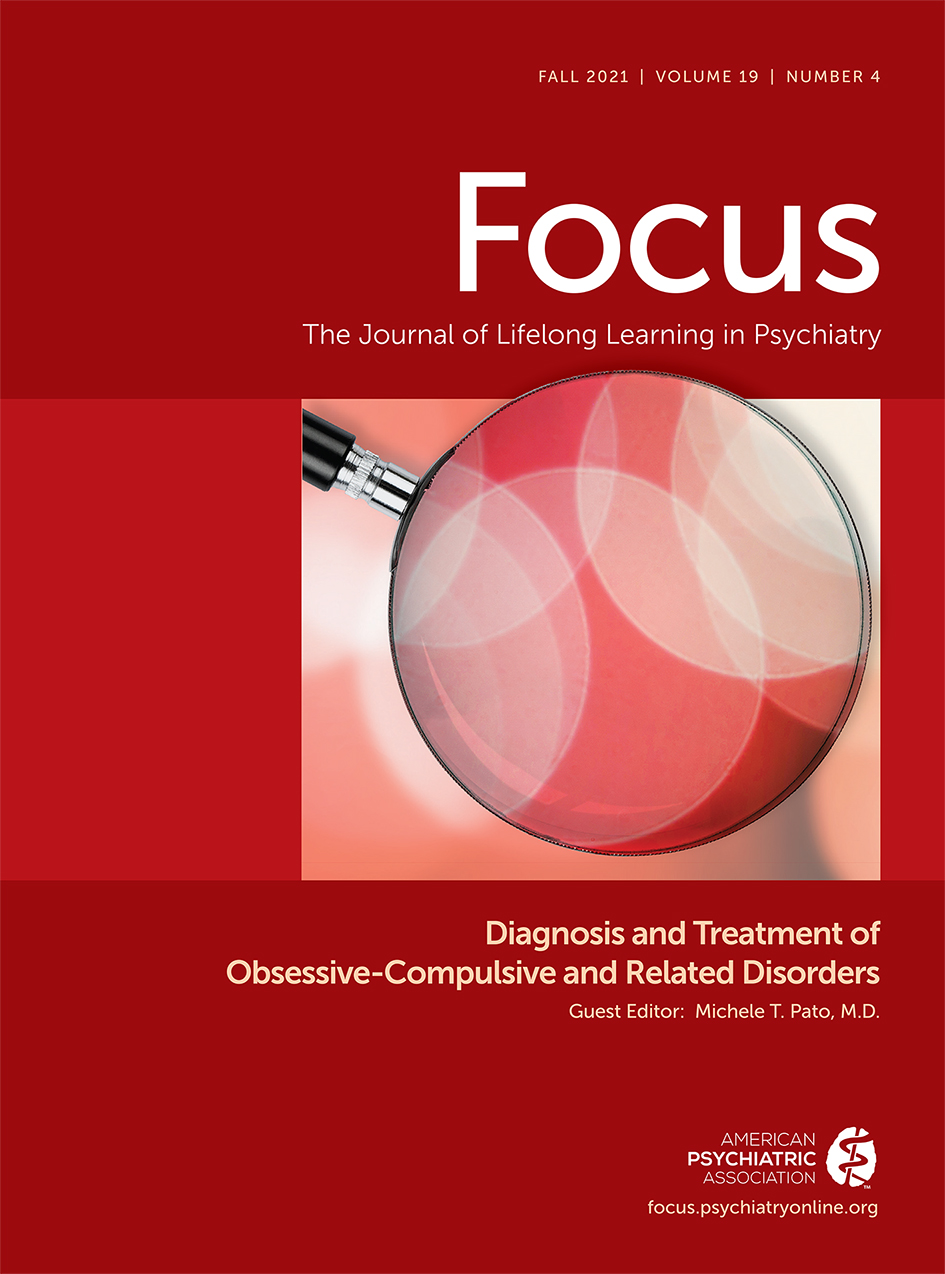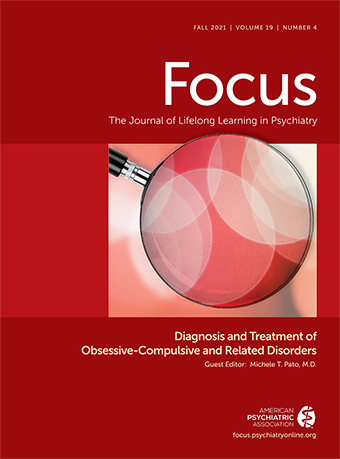It is gratifying to see the changes that have taken place since my colleagues and I first published on obsessive-compulsive disorder (OCD) in the Spring 2015 issue of Focus, less than 2 years after OCD had been moved out of its place among the anxiety disorders and given its own section in DSM-5. Critical in this change in classification, from “obsessive-compulsive spectrum disorders” to “obsessive-compulsive and related disorders,” was an understanding that although these related disorders—body dysmorphic disorder, hoarding, trichotillomania, and skin picking—shared certain features with OCD, there were differences, and thus the treatment course often needs to be different. Two specifiers were added: one on insight and one about the presence of tics, now or in the past. As per DSM-5, the clinician is asked to consider the degree of insight, ranging from good or fair, to poor, to absent/delusional. The role of insight can be critical in complying with and responding to treatment that is both cognitive-behavioral therapy (CBT) and pharmacologic in nature. Presence of tics can affect treatment too.
As you read each of the articles in this 2021 issue, you will find that the authors clarify the distinctions between diagnostic overlaps and diagnostic similarities to OCD and between treatment commonalities and treatment differences. They also give some attention to comorbid conditions such as Tourette syndrome (and tics), as well as depression, posttraumatic stress disorder, and panic disorder.
In addition, like the 2015 issue, this issue includes articles on genomics and on CBT. In genomics, the good news is that there has been progress in identifying some genomic risk. However, the article highlights that not only do studies need bigger sample sizes but also that the answers are not all in the genes. Even among identical twins, who share virtually 100% of their DNA, there is not full concordance for OCD. As we note, concordant heritability of OCD among identical twins is only 50%, and among fraternal twins (a first-degree relative) it is no different than with any other sibling: 10%−20%. Perhaps even more important to this issue, the data on related disorders, although scant, seem different. For instance, for hoarding, the overall heritability was estimated to be 51%. For trichotillomania there have been few studies as well, but heritability findings have been very divergent, ranging from 32% to 76%. Skin picking has an estimated heritability of approximately 40%−47%, a finding based on a single study, and body dysmorphic disorder heritability has been estimated to be around 40%, although based on a few studies, not just one.
The article on CBT gives an excellent review, not just of general exposure and response prevention (ERP), the hallmark of general OCD-CBT treatment, but also of nuances in cognitive distortions that may need to be addressed. It also highlights the importance of family accommodation in both individual and group treatments (of patients only and with family members) as well as addresses pediatric issues.
It was our goal to provide practical as well as evidence-based findings to all clinician-scientists—knowledge and data that show not just where the field of OCD and related disorders has been but also where it is headed. The authors of these contributions have a wealth of hands-on experience with people with OCD and appreciate the nuance of treating the individual.

